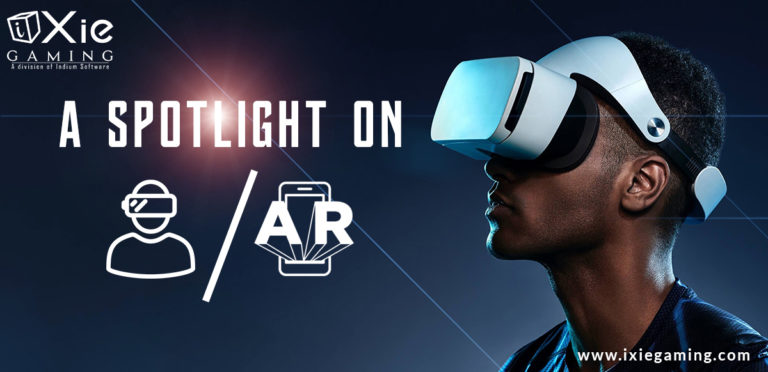As technology advances, new solutions have emerged in the gaming industry. Some highly transformative technologies introduced in gaming are augmented reality (AR) and virtual reality (VR). AR/VR game development has revolutionized how we create and interact with games, introducing a more immersive experience.
AR overlays digital information onto the actual world, improving our perception. On the other hand, VR immerses gamers and other users in virtual worlds, taking them away from the real world. AR and VR have significantly enhanced user experiences by providing truly immersive gameplay.
But how has AR and VR transformed the gaming industry? Let’s find out.
8 Ways AR and VR Have Transformed the Gaming Sector
Here’s a more comprehensive look at the transformative power of AR and VR in the gaming industry:
1. Immersive or Life-Like Gameplay
Initially, players would not relate realistically to their favorite games. Fortunately, this is no longer the case anymore. AR and VR have transformed the gaming experience by enabling players to physically connect and engage with games. For instance, AR and VR games make players feel, smell, and feel the surroundings and even witness object movements.
This level of immersion enables you to fully experience the digital environment. As a result, you can interact with the game world more intuitively and naturally. Therefore, it brings a stronger sense of presence and heightened emotions within the game.
2. Improved Gaming Experience
The goal of every developer is to deliver an irresistible gaming experience. Such experiences encourage players to play the game more, eventually generating higher revenue for the creator, especially if monetized appropriately. So, it’s a win-win situation for both the developer and the player.
But how do AR and VR enhance the gaming experience? Well, think of a multidimensional game room or place that combines virtual and real worlds. A player can move around, feel, and touch direct characters and objects and shoot bullets and beams at enemies. This makes the gaming experience more engaging and entertaining.
That’s another advantage of AR and VR in gaming. These technologies can help design real-time games and improve players’ experience to manifolds, thanks to the gamification of real spaces. For instance, AR games such as Pokémon GO have demonstrated how digital creatures can be integrated into the real world, encouraging players to explore their surroundings – something that was impossible with typical games.
3. Improved Storytelling
AR and VR can take storytelling to the next level. For instance, in virtual reality, players can actively participate in the game’s narrative, exploring the story from multiple perspectives and angles.
On the other hand, AR overlays digital components in the real world. This enables players to experience narratives that seamlessly blend with their surroundings.
4. Educational Benefits
AR and VR Games offer more than just fun. They can be used for educational purposes, achieving better results than conventional teaching and learning mechanisms. These games stimulate the player’s senses and improve their imagination power. Therefore, they support learning and help players understand concepts better and develop new skills faster.
Many companies have ventured into AR/VR game development for educational purposes. For instance, AR games can overlay informative visuals onto real-world objects, improving educational experiences. On the other hand, VR simulations can offer realistic training environments for different industries, including military, aviation, and medicine.

5. Social Interaction
Gaming has traditionally been a solitary activity. However, AR and VR technologies have transformed it into a social experience. For instance, VR games enable players to meet and interact with others in a shared virtual space. This creates a sense of connection and presence between players, deviating from the traditional way of gaming.
On the other hand, AR games bring social interactions into the real world. This enables players to compete and collaborate while physically sharing the same space.
6. Increase in Revenue
Creators are constantly looking for ways to generate more revenue from their games. AR and VR games have provided a new avenue for developers to earn more from their games. These games are more interactive and engaging. As a result, players play them for a longer period while sharing their experiences with acquaintances and friends.
By sharing these experiences, they bring more new players to the game. The extended engagement and mouth publicity boost revenues, potentially bringing billions of dollars to the gaming industry.
7. Evolving Gameplay Mechanics
AR and VR have significantly transformed gameplay mechanics, introducing new mechanics that capitalize on their unique capabilities. Initially, players could use keyboards and gaming pads to play games.
However, in AR and VR gaming environments, players can physically move, interact, and use gestures with virtual objects in ways that were initially impossible. As AR and VR technologies advance, they’ll open up possibilities for more innovative gameplay mechanics and challenge game creators to think outside the box.

8. Inclusivity and Accessibility
The increasing need to include people with disabilities in every industry has, over time, faced significant challenges in the gaming sector. Initially, games used screens, which hindered accessibility for people with visual impairments.
However, AR and VR games have made gaming more inclusive and accessible to such communities. For instance, VR games offer new avenues for individuals with limited mobility to engage in physical activities. On the other hand, AR games enhance the gaming experience for people with auditory and visual impairments by providing alternative sensory cues.
The Future of AR and VR in Gaming
Initially, AR and VR games had basic capabilities with 3D images and overlaid faces of characters to make games more realistic. However, they have surpassed these limitations in recent times and have integrated the real world into the system.
As we look into the future, these games will potentially be capable of orienting directions and understanding and working per the player’s psychology. This will improve the gaming experience, enabling players to move and adjust in a real-time environment.
Final Thoughts
AR and VR have significantly transformed the gaming industry. They have introduced new capabilities that were initially impossible, enabling players to enjoy a more immersive gaming experience. AR and VR games have the potential to enhance storytelling and social interaction in gaming. As technology advances, AR/VR game development will likely incorporate other advanced solutions like artificial intelligence and machine learning to further personalize gaming experiences taking the gaming sector to the next level.






